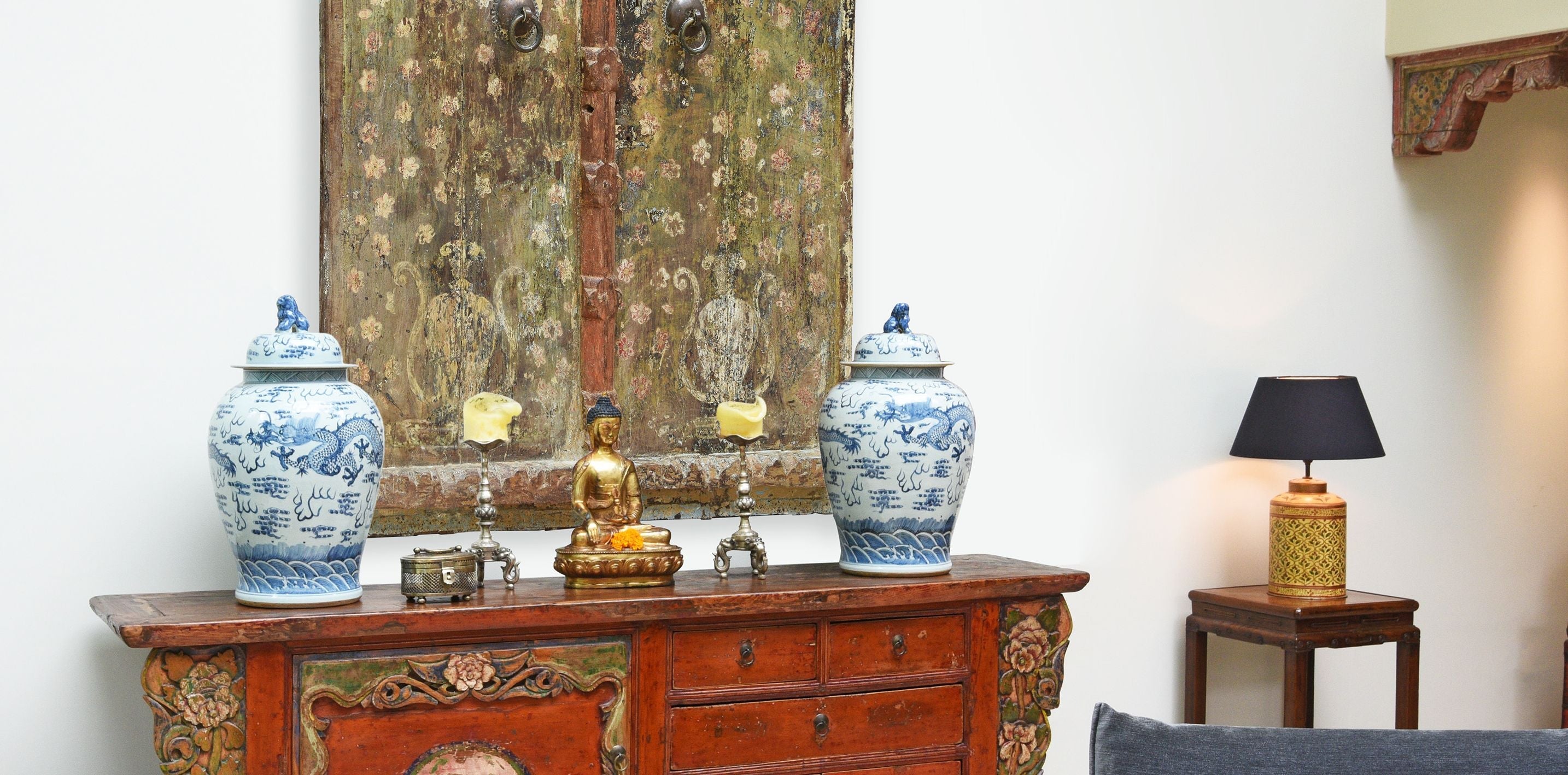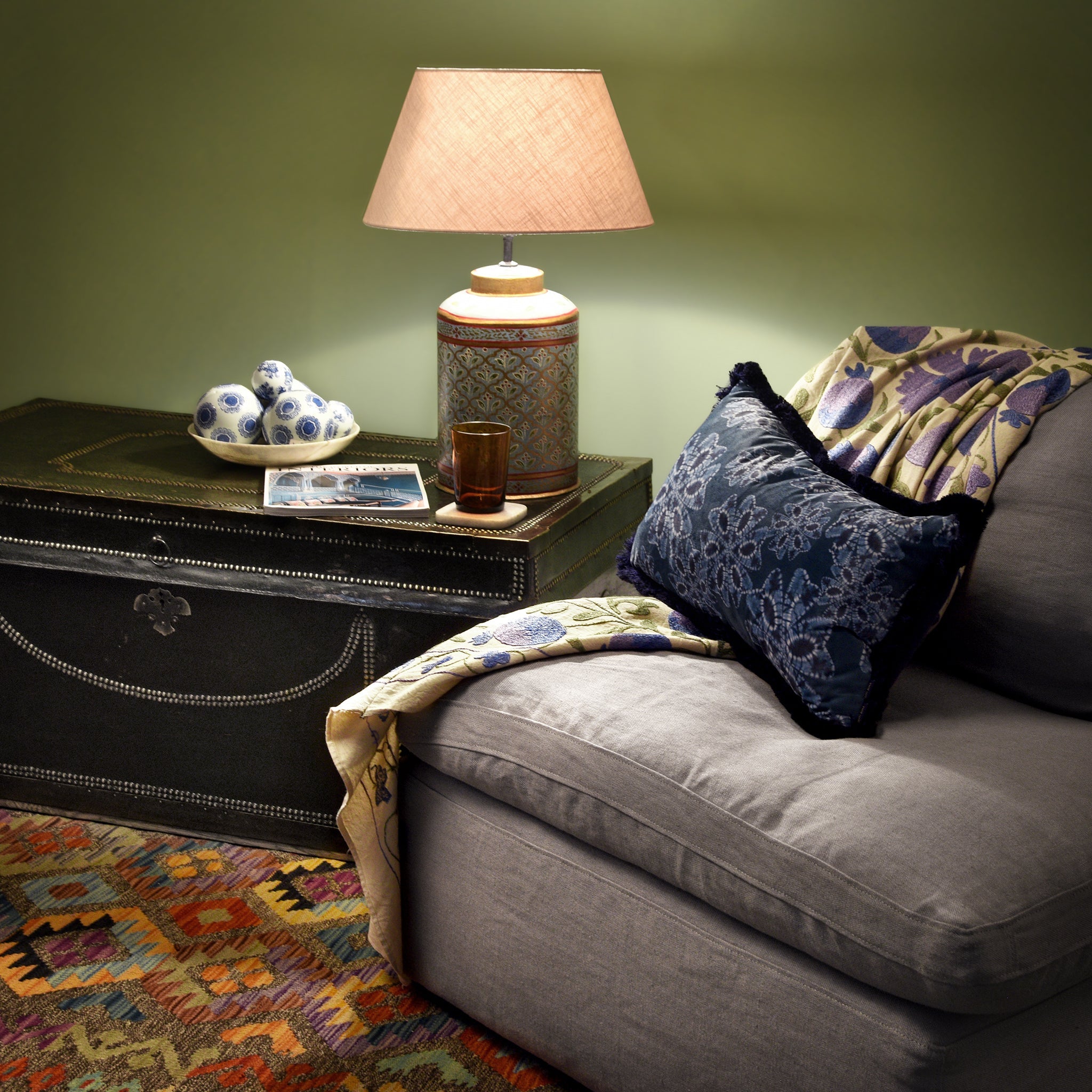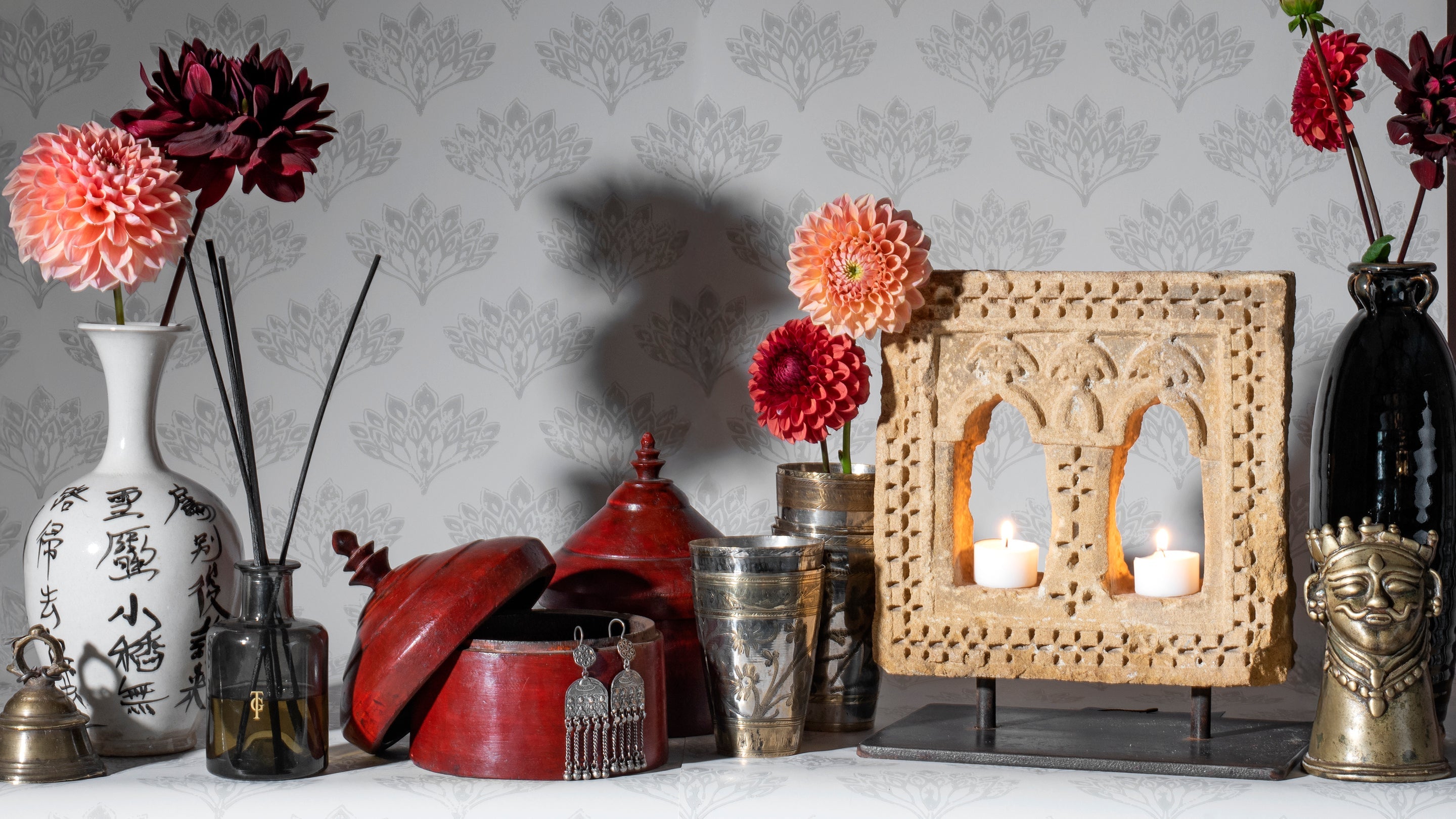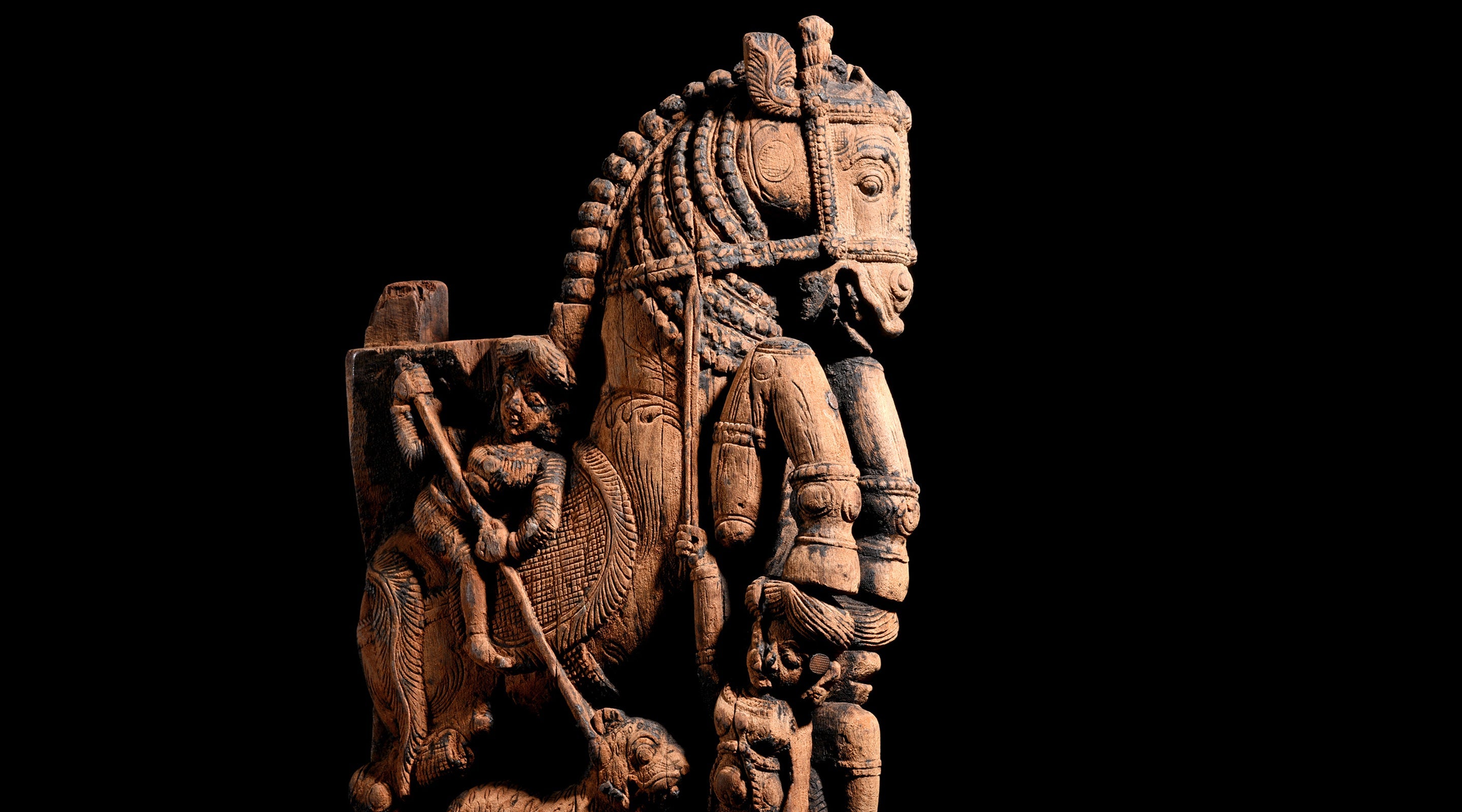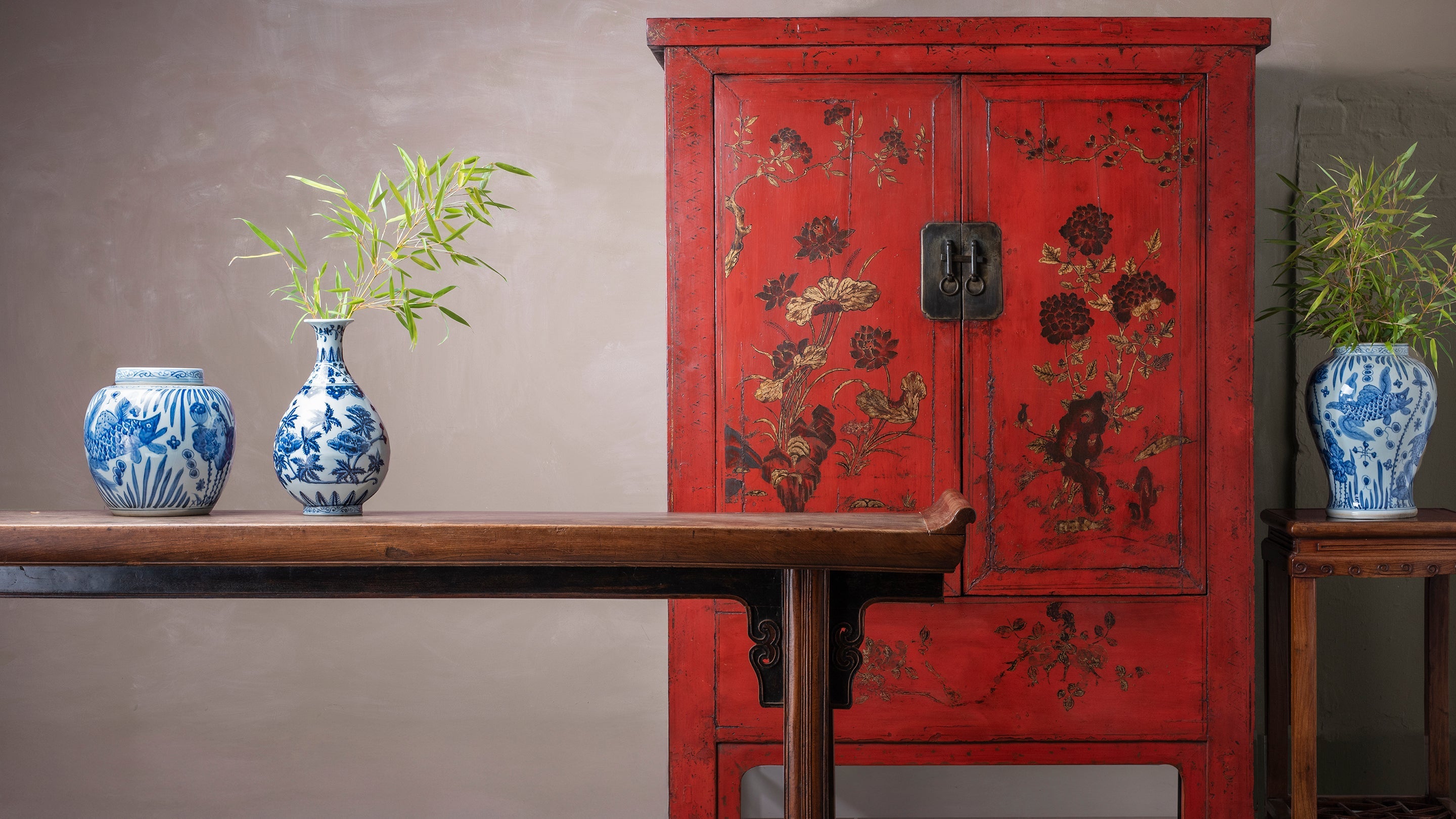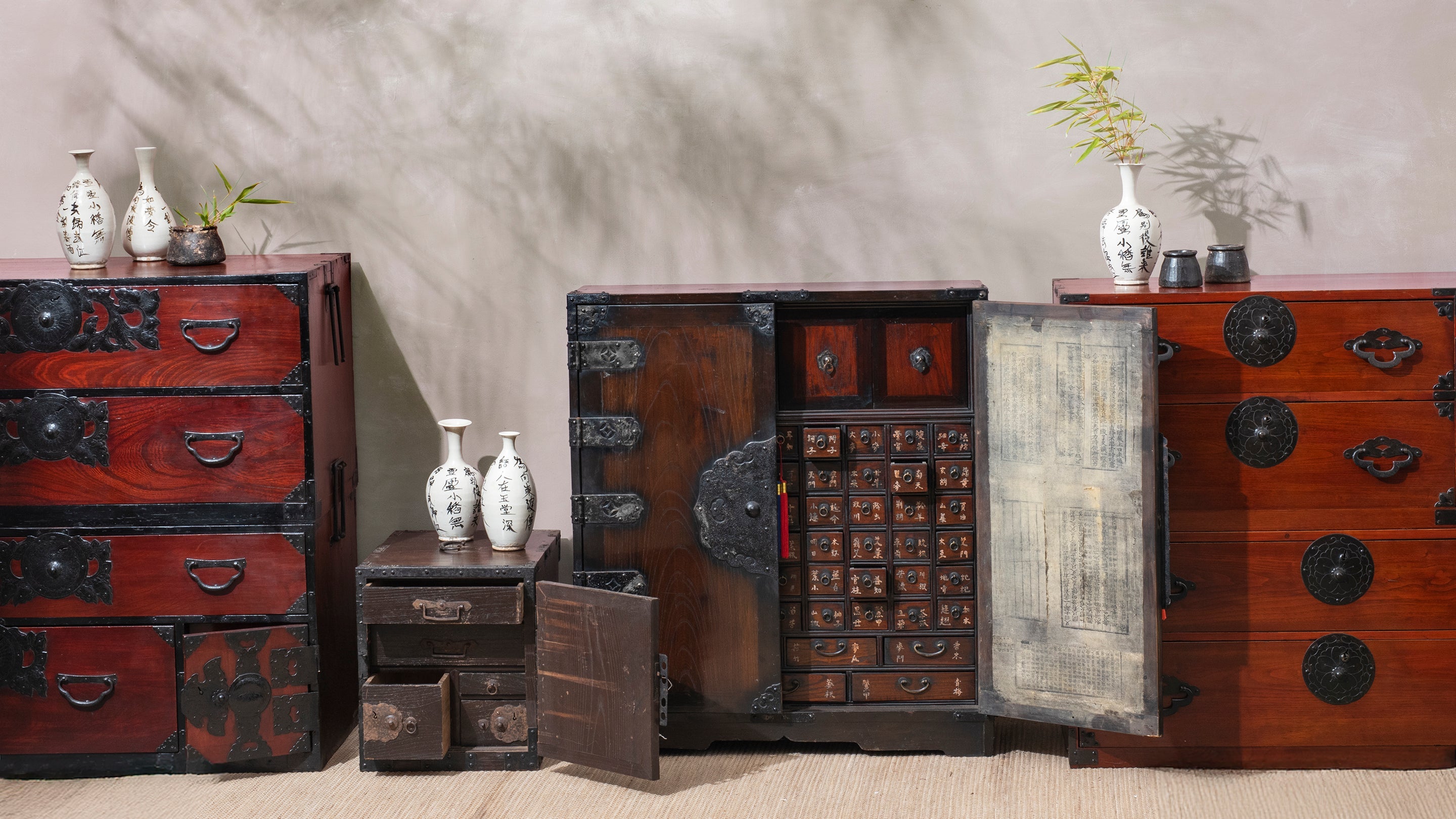Chinese Export Lacquer represents one of the most elegant outcomes of East–West exchange, flourishing through the Qing dynasty when lacquered works were crafted in Canton (modern Guangzhou) for export to Europe, Britain, and America. Each piece embodies the meeting of Chinese artistry and Western taste, combining refined techniques with forms adapted for fashionable Georgian and Regency interiors.
The Craft of Canton Lacquer
Every example of Chinese export lacquer was made in Canton. Artisans built up multiple layers of sap-based lacquer—most commonly over Chinese swamp cypress—polishing to a deep, reflective ground before adding fine chinoiserie decoration in gold. Scenes of figures, pavilions, trellis borders, and floral scrolls were “painted” in gilt using Japanese maki-e techniques to suit Western taste while retaining a distinctly Chinese sensibility.
Forms & Function
Chinese export lacquer encompassed a wide variety of forms created to meet Western needs while showcasing Chinese craftsmanship:
- Table & Jewellery Cabinets: Early 19th-century cabinets with gilt panels, small fitted drawers, and mirrored doors.
- Sewing, Work & Games Boxes: Luxurious domestic accessories for Georgian and Regency households.
- Bonheur du Jour Desks, Shrine Cabinets & Chests on Stand: Larger, rarer furniture forms marrying European design to Canton lacquer artistry.
- Tea Caddies & Ice Boxes: Intimate pieces prized for their crisp gilt ornament and restrained opulence.
- Trays and Fans were also commonly produced.
Red Lacquer Camphor Chests for South India
Among the most evocative export forms are the red lacquer camphor chests made in Canton in the 18th century for the Anglo-Indian market. These brass-bound chests—often carried aboard East Indiaman trading ships plying routes between China, India, and Britain. Their fittings speak a rich cross-cultural language blending British, Chinese & Indian forms. The corner mounts take the form of ruyi—the auspicious ceremonial sceptre symbolising power and good fortune in Buddhist and Chinese folklore—while the lock plate is a double-headed eagle, known in South India as the Gandaberunda (also spelled Berunda. These red lacquer camphor chests are the precursors to the better-known 19th-century red leather camphor chests produced in Canton.
Legacy
Chinese export lacquer objects were symbols of global trade and taste. To their makers they were commercial exports; to Western patrons they signalled sophistication and curiosity. Today, their layered surfaces still reflect that dialogue between East and West, artistry and commerce, hand and history.

Explore New Arrivals
With regular shipments from India, China & The UK art market there's always newness









